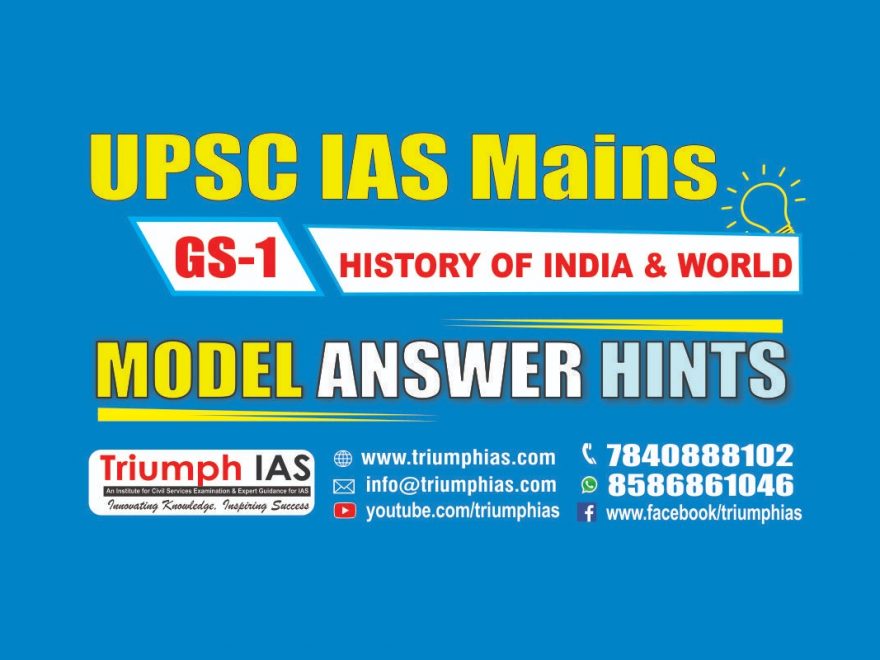Assess the importance of the accounts of the Chinese and Arab travellers in the reconstruction of the history of India. (150words)
Ans. The Indian historiography is never complete and free of biasness without corroborating from archaeology and writings of foreign accounts.
Therefore, there are many references to India in foreign accounts which are used by historians in the reconstruction of Indian history.
Such texts reveal how people from other lands viewed India and its people, what they noticed and found worthy of description. The accounts of Chinese and Arab travellers who visited India at different stages of India’s past are examples of such corpse of travel accounts.
While the Arab travellers were curious of India’s riches and its distinct cultural traditions, the Chinese travellers came to India more often in search of Buddhist scriptures and visiting monasteries.The best known among those who wrote accounts of their Indian travels are Faxian (FaHien) ,Xuangzang (Hiuen Tsang) and It-Sing,etc.
Chinese Travellers’ Account:-
Faxian’s travels extended from 399 to 414 CE and were confined to northern India. Faxian presents an idyllic and idealised picture of Indian society in the 5th century A.D..
According to him people in India did not have to register their households or appear before magistrates.
Xaungzang left his home in 629 CE and spent over 10years travelling across India. Xuangzang gives a vivid description of the beauty, grandeur and prosperity of Kanaunj, the capital of Harsha’s empire in 7th century. His work Si-Yu-Ki throws light on almost all the aspects of Indian life during 7th century. Yijing (It-sing), another 7th century Chinese traveller lived for 10years ingreat monastery of Nalanda.
Arab Travellers’ account:-
Their accounts are useful source of information for early medieval India. The important Arab works on India include the 9th-10th century writings of travellers and geographers such as Sulaiman, Al-Masudi, Al-Biduri and Haukal.
Later Arab writers include AI-Biruni and Ibn-Battuta. Of all these ‘Al-Biruni’s Tahqiq-i-Hind’ and Ibn Battuta’s ‘Rihla’ are outstanding in terms of covering almost all the aspects of Indian life including social, political, economic and religious aspects of the medieval India.
Al-Biruni travelled India to satisfy his curiosity about the land and its people and to study their ancient texts in original language. His Taqiq-i-Hind covers a large number of topics including Indian scripts, sciences, geography, astronomy, astrology, philosophy, literature, beliefs, customs, religions, festivals, rituals, social organisation and laws.
Ibn-Battuta’s book of travels, called Rihla written in Arabic provides extremely rich and interesting details about the social, political and cultural life in the subcontinent in the fourteenth century. Ibn Battuta visited in court of Sultan of Delhi, Muhammad bin Tughlaq. His account provides a vivid description of Indian cities during the medieval times. According to him Indian cities are full of exciting opportunities for those who had necessary drive, resources and skills. They were densely populated and prosperous. Since lndia and Arabs had developed trading relations in Indian Ocean in early medieval times, the Arab accounts have extensively covered the trade relations between India and Arabs as well as that of Indian Ocean region. Thus, travels accounts can help historians to reconstruct the history of India.

